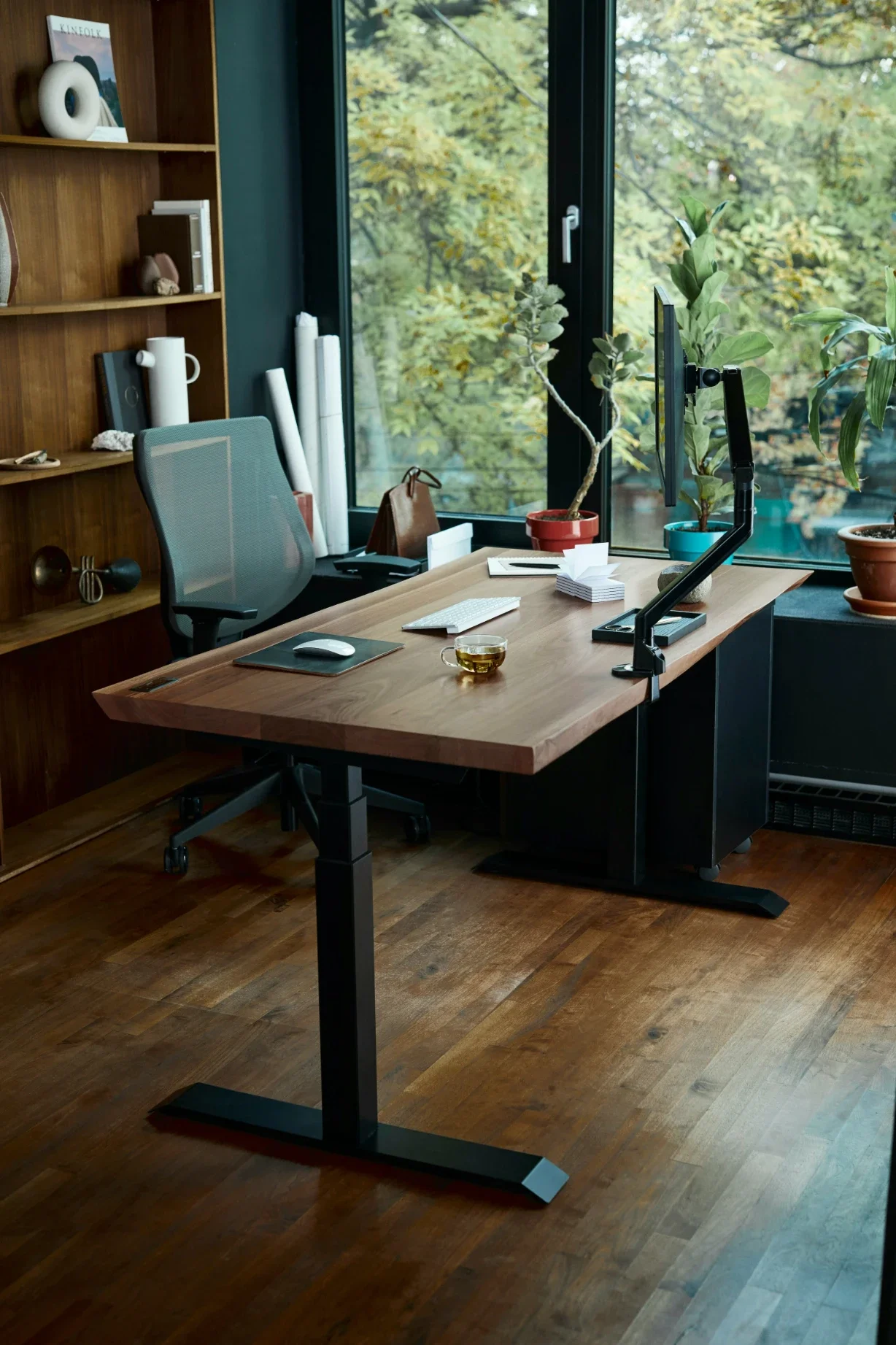Lower Back Support Chair — Improve Comfort and Prevent Pain
Improve posture and reduce discomfort with a lower back support chair. Learn how the right design enhances comfort and prevents long-term pain.
Back pain doesn’t start with age — it starts with a chair. You might not notice it the first few months, but the slouching, the uneven weight, and the tiny daily strains add up. One day, you stand up and realize your back is tight again. That’s your body asking for better support.
When Sitting Becomes the Enemy
If your lower back hurts after a day at your desk, you’re not alone. Sitting seems harmless — we do it for hours, every day — but our bodies were never built for stillness.
Each time you lean forward to type or twist in your chair, your spine compensates. Your muscles tighten. Your core switches off. Before long, your “normal” sitting position becomes slightly off-center — and your body pays for it.
That’s why a lower back support chair isn’t just a comfort upgrade. It’s a reset button for how your body aligns when you sit.
The Secret to a Supportive Chair
Every great chair does one thing exceptionally well: it makes good posture feel effortless. You shouldn’t try to sit right — your chair should make it happen automatically.
Built for the Shape of You
The lower back has a gentle inward curve — the lumbar curve — that’s essential for balance. A good chair supports that curve so your spine can rest naturally, without slumping or straining.
A cheap chair forces your back to adapt to it.
A well-designed one adapts to you.
That’s the difference between ending your day tired versus ending it relaxed.
Movement Is the Missing Ingredient
Stillness is what hurts most. The spine loves motion — even small ones. A well-built chair lets you lean, rock, stretch, and adjust without losing balance.
Think of it as dynamic sitting: small, natural shifts that keep your body alive. That subtle tilt or recline keeps your blood flowing and muscles from locking up.
Cushioning That Supports, Not Swallows
Here’s a misconception: soft = comfortable. Not for long.
A seat that’s too soft lets your hips sink, flattening your spine. One that’s too firm cuts into your legs and limits circulation.
The best ergonomic chair for lower back support balances both — firm in structure, soft to the touch. You should feel lifted, not buried.
Breathable Materials for Real Comfort
If your chair traps heat, it’s already working against you. Breathable mesh or hybrid materials let air flow, keeping your body cool and relaxed. When you’re not distracted by discomfort, your focus naturally improves.
It’s not a luxury — it’s practical comfort.
How Lower Back Support Actually Prevents Pain
You don’t need medical jargon to understand it. Here’s the simple truth:
When your lower spine gets support, the rest of your body stops compensating.
Your shoulders stop tensing, your neck relaxes, and your hips stay even.
That chain reaction doesn’t just relieve pain — it prevents it. Over time, your body learns a new “default” posture: upright, stable, comfortable.
That’s how lasting relief happens — not by forcing posture, but by making good alignment second nature.
The Most Overlooked Factor: Adjustability
Every spine is different — your lumbar curve isn’t the same as someone else’s.
That’s why fixed chairs fail.
A great chair for lower back pain lets you adjust everything: lumbar height, seat angle, armrests, and tilt tension.
Once you find that personal “sweet spot,” you’ll instantly feel the difference. It’s like your body finally exhales.
What to Avoid When Buying a Chair
1. The “Pretty but Pointless” Chair
Looks good in photos, feels awful in real life. Flashy design ≠ support.
2. The Over-Padded Trap
Cushy isn’t always kind. Your back needs structure more than fluff.
3. The Fixed Frame
No movement means no circulation. A rigid backrest turns into a stiff spine.
4. The One-Size-Fits-All Design
Bodies differ. Your chair should too.
If your current seat checks any of these boxes, your back’s already paying the price.
Real Comfort Is Quiet Support
You’ll know a great chair the same way you know great shoes — you stop noticing them. You sit, focus, move, and forget about your back entirely.
That’s what the lower back support chair is built for — it quietly follows your movement, supports your posture, and disappears beneath you.
You won’t sit in it; you’ll sit with it. And that’s the difference that ends back pain for good.
Small Daily Habits That Make a Big Difference
Change angles often. Don’t freeze in one position.
Keep your feet grounded. It stabilizes your hips and spine.
Adjust your monitor height. Your eyes should meet the screen’s top edge.
Stretch your spine gently every hour. Even 30 seconds helps.
Lean back when you can. Your chair’s built to move — let it.
These habits work with your chair — not against it.
Comfort Isn’t a Luxury — It’s Health
You might not notice poor posture today. But over the years, the small discomfort becomes real damage — tight muscles, pressure points, and fatigue that lingers even when you’re not sitting.
A chair designed for your lower back doesn’t just help you now; it protects your future self.
Because feeling comfortable at work or home shouldn’t be rare, it should be the standard.
Conclusion
A lower back support chair is more than a solution — it’s a statement: you’re done accepting discomfort as normal.
Once you sit in a chair that supports your spine the way it was meant to, you’ll realize how much energy you’ve been wasting on pain.
It’s not about sitting perfectly. It’s about sitting freely — without the weight of tension holding you back.
And when your back’s finally at ease, everything else — focus, confidence, comfort — follows naturally.


